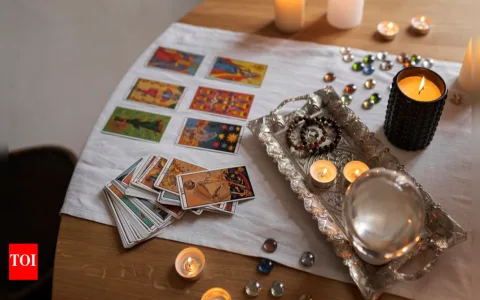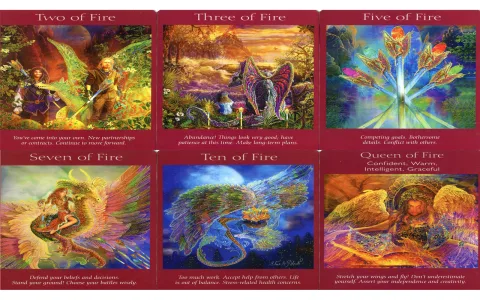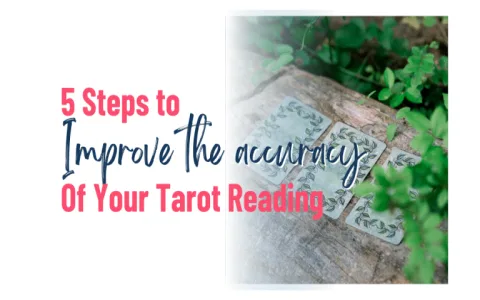Man, I gotta tell you, the stuff people spout about learning the tarot is total nonsense. You know, the whole, “You need years of dedicated study, the cards will speak to you when they are ready,” kind of fluff? Nah. I’m a practical guy, and I needed to know the `tarot kartları anlamları` – the card meanings – fast. I wasn’t trying to open a shop or become some kind of high priestess; I just needed to stop looking like an idiot every time someone pulled out a deck.
So, here’s what I actually did. This is the messy, non-spiritual, quick-and-dirty process I hammered out over a few weeks. It was pure necessity, and it worked.
My Frantic Breakdown Method: Ditching the Books
The first thing I did was ditch the official guidebooks. They are way too flowery and confusing. They give you a paragraph when all you need is a punchline. I wasn’t learning a language; I was learning a code. My plan was to simplify and then systematize. I wanted to see a card and immediately pull the main idea, not ponder the historical significance of the color yellow in the background.
I grabbed a standard Rider-Waite deck. Don’t mess with others when you’re starting; 90% of what you see online is based on this deck. Then I ignored 78 cards and instead focused on three main categories, drilling each one until I could quote the core concept in my sleep.
Phase 1: The Major Arcana (The Big Ideas)
There are 22 of these, and they tell a story—The Fool’s Journey. I didn’t try to memorize all the individual card names first. Instead, I locked in the energy. I literally made flashcards with one word, tops, for each card. This is key.
- The Magician: Action/Creation
- The Empress: Abundance/Nurturing
- The Tower: Disaster/Sudden Change
- The Star: Hope/Healing
- The World: Completion/Success
I repeatedly quizzed myself, not on the name, but on the picture and the feeling. If I saw the Devil, I just shouted “Addiction/Restriction!” If I saw the Moon, “Confusion/Illusion!” That simple practice cemented the core meaning faster than reading five pages of interpretation.
Phase 2: The Minor Arcana (The Quick Math)
This is where most people quit. Fifty-six cards? Forget it. But I realized it’s a simple formula. You don’t learn the card; you learn the components. I broke the Minor Arcana into two axes: The Suits (What is the action about?) and The Numbers (What stage is the action in?).
Axis 1: The Suits (10 minutes of learning)
- Wands: Work, Ambition, Action, Passion (Fire energy)
- Cups: Feelings, Emotions, Relationships, Intuition (Water energy)
- Swords: Thoughts, Intellect, Trouble, Conflict (Air energy)
- Pentacles: Money, Career, Body, Stability (Earth energy)
Axis 2: The Numbers (The Story of 1 to 10)
I mapped the numbers to a progressive life stage. Every card follows this story:
- Aces (1): New Start, Potential
- Twos (2): Balance, Partnership, Duality
- Threes (3): Growth, Group, Creation (The first result)
- Fours (4): Stability, Stagnation, Foundation
- Fives (5): Conflict, Loss, Crisis (The shaky spot)
- Sixes (6): Harmony, Resolution, Moving On
- Sevens (7): Challenge, Reflection, Hidden Factors
- Eights (8): Movement, Action, Mastery
- Nines (9): Fulfillment, Near-Completion, Inner-Work
- Tens (10): Completion, End of Cycle
Now, I could combine them in real time. The Five of Swords? Conflict (5) in Thoughts/Trouble (Swords). That means loss, defeat, or walking away from a fight. The Three of Pentacles? Growth (3) in Money/Career (Pentacles). That means teamwork, career growth, or skilled work. See? It became fast math, not magic.
Phase 3: The Court Cards (The Personalities)
These 16 cards are like people, and I assigned them roles based on their title and suit.
- Page: New Energy, Student, Message
- Knight: Action, Rapid Movement (often reckless)
- Queen: Inner Knowledge, Intuition, Supportive
- King: Outer Control, Authority, Master of the Suit
The King of Wands? A guy who is a powerful, authoritative leader (King) in work and action (Wands). Done. That’s all you need.
The Real Reason I Went Nuts Learning This
Now, why did I go through all this trouble? Why the rush? You know how it is. I was seeing this woman, Maya. She was, like, deep into all the metaphysical stuff: crystals, lunar cycles, the works. I wanted to impress her, right? So I dropped a casual line that I “dabbled” in tarot. I didn’t dabble; I knew nothing.
The very next weekend, her old college roommate came to town, a total basket case over a breakup. Maya says, “Hey, my guy here can do a quick reading for you!”
My blood absolutely ran cold. I had three days. Three days to go from knowing that the card has a picture on it to actually giving a competent reading. My entire reputation with Maya, maybe my future with her, was hanging on whether I could distinguish the Eight of Cups from the Ten of Cups.
I bought index cards and stayed up all night, fueled by terrible coffee, using the system I just laid out. I drilled the combos. I practiced the story for the Majors. I whispered the keyword combinations over and over to myself in the bathroom mirror.
When I finally sat down, my hands were shaking. I spread the cards, pulled the combination keywords using my system, and then strung them together into something that sounded halfway meaningful. I mixed up a few minor details—I called the Knight of Swords just “aggressive action” instead of “aggressive and possibly reckless action”—but the core message was right there because the formula was right.
Maya was thrilled. Her friend cried (in a good way, I guess). The whole thing was a lie, a frantic, highly pressurized crash course driven purely by the need not to look like a complete idiot in front of a girl I liked. It wasn’t about the cosmos; it was about crushing a quick-study test. That’s the real story of how I learned the basic meanings fast. No magic, just an intense need and a broken-down systematic process.




